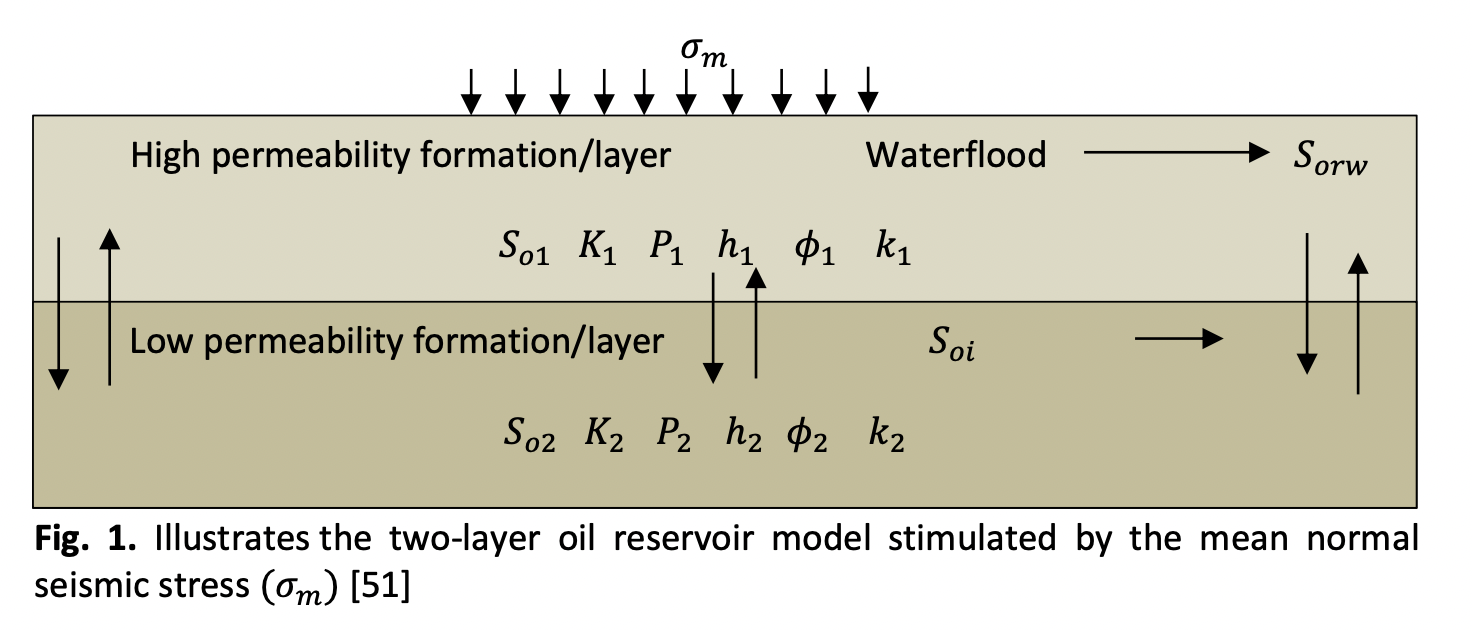Pore Pressure Diffusion Waves Transmission in Oil Reservoir
DOI:
https://doi.org/10.37934/arfmts.109.2.4965Keywords:
Attenuation, Biot’s slow wave, EOR, oil reservoir, pore pressure, Seismic wavesAbstract
Recent studies on seismic wave excitation have revealed that mesoscopic wave-induced fluid flow (WIFF) is a process that attenuates the compressional (P) waves in reservoir rocks at seismic frequency bands. Fluid flow and Biot's slow diffusion (pressure) waves are produced when the P-waves create fluid-pressure gradients at mesoscopic-scale heterogeneities. Pore pressure continuity can be sustained by converting seismic energy into diffusion waves that diffuse away from the interfaces or boundaries. Biot’s diffusion waves fail to comply with a square-law approach because of their slow propagation velocity and higher attenuation. It is currently uncertain how to characterize reservoir fluids in mature oil reservoirs during seismic wave-based enhanced oil recovery (EOR). A simplified 1D two-layer reservoir model was investigated in this study. The findings demonstrate that diffusion wave propagation in oil reservoirs is frequency-dependent and affected by rock permeability and fluid viscosity. At a formation layer interface, it was discovered that diffusion waves obeyed the accumulation-depletion relationship rather than the reflection-refraction approach. Therefore, pore pressure diffusion waves can characterize reservoir fluid during seismic EOR and monitor the CO2 front in depleted reservoirs during storage for CCUS projects. It can also detect shale gas transport in low permeability layers and identify the propagation of fractures during gas/oil recovery.
Downloads

































